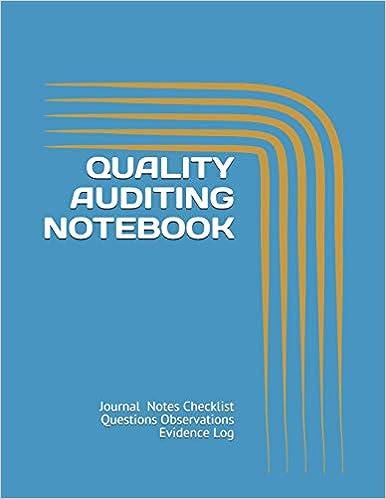Answered step by step
Verified Expert Solution
Question
1 Approved Answer
Use the information above to solve question B. Koontz Company manufactures a number of products. The standards relating to one of these products are shown








Use the information above to solve question B.
Koontz Company manufactures a number of products. The standards relating to one of these products are shown below, along with actual cost data for May. Standard Actual Cost per Cost per Unit Unit $ 9.12 $ 9.62 29.00 Direct materials: Standard: 1.90 feet at $4.80 per foot Actual: 1.85 feet at $5.20 per foot Direct labor: Standard: 1.45 hours at $20.00 per hour Actual: 1.50 hours at $19.50 per hour Variable overhead: Standard: 1.45 hours at $10.00 per hour Actual: 1.50 hours at $9.60 per hour Total cost per unit Excess of actual cost over standard cost per unit 29.25 14.50 14.40 $ 53.27 $52.62 $0.65 The production superintendent was pleased when he saw this report and commented: This $0.65 excess cost is well within the 4 percent limit management has set for acceptable variances. It's obvious that there's not much to worry about with this product." Actual production for the month was 19,500 units. Variable overhead cost is assigned to products on the basis of direct labor-hours. There were no beginning or ending inventories of materials. 1a. Compute the following variances for May, materials price and quantity variances. 1b. Compute the following variances for May, labor rate and efficiency variances. 1c. Compute the following variances for May, variable overhead rate and efficiency variances. (Indicate the effect of each variance by selecting "F" for favorable, "U" for unfavorable, and "None" for no effect (i.e., zero variance). Input all amounts as positive values.) Show less $ 1a. Materials price variance Materials quantity variance $ 1b. Labor rate variance $ 14,430 U 4,680 F 14,625 F 19,500 IU 11,700 9,750 U $ Labor efficiency variance 1c. Variable overhead rate variance Variable overhead efficiency variance $ $ How much of the $0.65 excess unit cost is traceable to each of the variances computed in (1) above. (Indicate the effect of each variance by selecting "F" for favorable, "U" for unfavorable, and "None" for no effect (i.e., zero variance). Input all amounts as positive values. Round your answers to 2 decimal places.) Materials: Price variance $ 0.74 U Quantity variance 0.24 F 0.50 U Labor: Rate variance 0.75 F 1.000 0.25 U Efficiency variance Variable overhead Rate variance 0.60 F 0.50 U 0.10F Efficiency variance Excess of actual over standard cost per unit $ 0.65 U How much of the $0.65 excess unit cost is traceable to apparent inefficient use of labor time? (Indicate the effect of each variance by selecting "F" for favorable, "U" for unfavorable, and "None" for no effect (i.e., zero variance). Input all amounts as positive values. Do not round intermediate calculations. Round your final answers to 2 decimal places.) $ 0.65 U Excess of actual over standard cost per unit Less portion attributable to labor inefficiency: Labor efficiency variance Variable overhead efficiency variance Portion due to other variances 1.00 U 0.50 U 1.50 U $ 0.85 How much of the $0.65 excess unit cost is traceable to each of the variances computed in (1) above. (Indicate the effect of each variance by selecting "F" for favorable, "U" for unfavorable, and "None" for no effect (i.e., zero variance). Input all amounts as positive values. Round your answers to 2 decimal places.) Materials: Price variance $ 0.74 U Quantity variance 0.24 F 0.50 U Labor: Rate variance 0.75 F 1.000 0.25 U Efficiency variance Variable overhead Rate variance 0.60 F 0.50 U 0.10F Efficiency variance Excess of actual over standard cost per unit $ 0.65 U How much of the $0.65 excess unit cost is traceable to apparent inefficient use of labor time? (Indicate the effect of each variance by selecting "F" for favorable, "U" for unfavorable, and "None" for no effect (i.e., zero variance). Input all amounts as positive values. Do not round intermediate calculations. Round your final answers to 2 decimal places.) $ 0.65 U Excess of actual over standard cost per unit Less portion attributable to labor inefficiency: Labor efficiency variance Variable overhead efficiency variance Portion due to other variances 1.00 U 0.50 U 1.50 U $ 0.85Step by Step Solution
There are 3 Steps involved in it
Step: 1

Get Instant Access to Expert-Tailored Solutions
See step-by-step solutions with expert insights and AI powered tools for academic success
Step: 2

Step: 3

Ace Your Homework with AI
Get the answers you need in no time with our AI-driven, step-by-step assistance
Get Started


